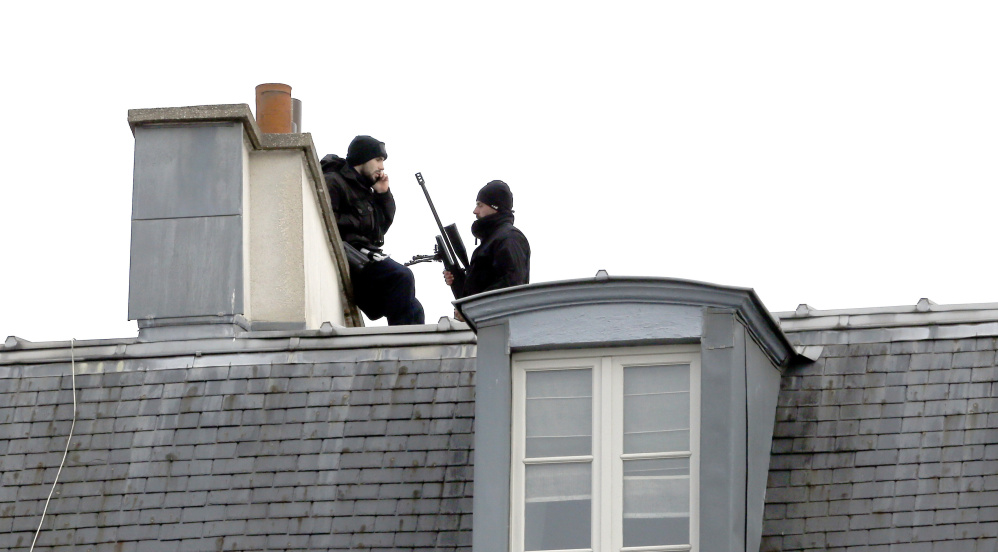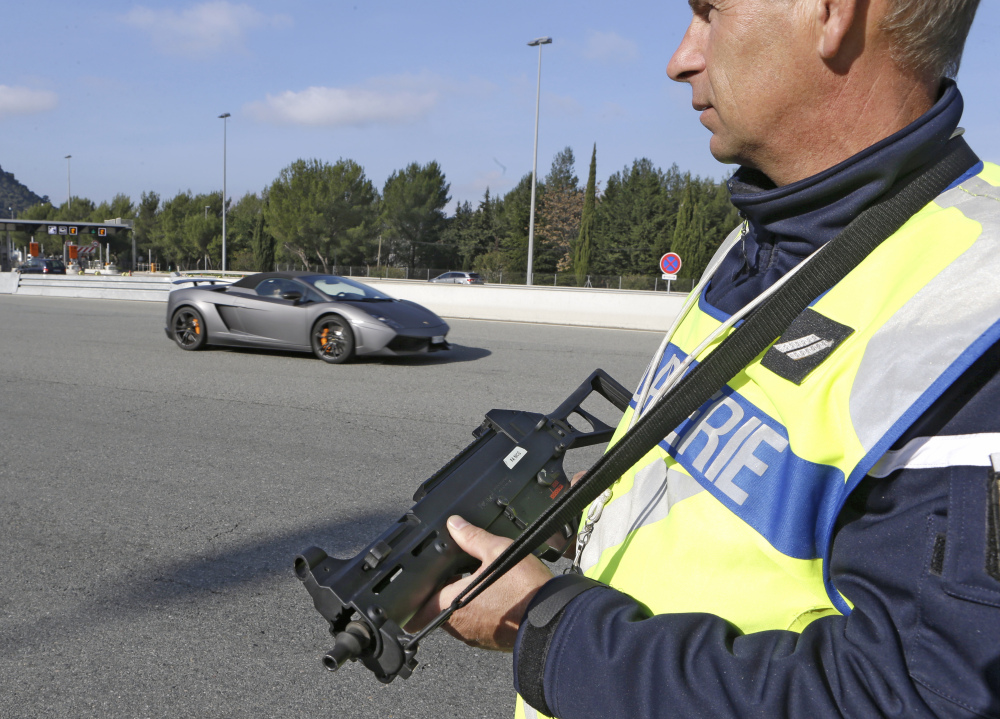Two weeks ago, France’s top spy arrived in Washington for urgent meetings with his counterparts at the CIA and other agencies on the war in Syria and the rapidly morphing terror threat emanating from the Islamic State.
“We have now two kinds of threats,” said Bernard Bajolet, head of the French spy service.
There is an “inside threat,” he said, speaking of young radicalized French residents, but “in addition to that we have the threat from outside, either through terrorist actions which are planned (and) ordered from outside or only through fighters coming back to our countries.”
The attacks Friday in Paris showed how these twin threats are converging on France like a vise, putting extraordinary pressure on security services that have long been regarded as among the most capable in Europe, but now seem overwhelmed by a surge in plots tied to Islamist terror groups.
French and U.S. intelligence services were scrambling Saturday to make sense of the still-emerging details about an attack that involved at least eight militants launching assaults on targets scattered across the French capital, leaving at least 129 people dead.
A WEAKNESS EXPLOITED
But a flurry of related arrests outside France and clues suggesting that at least one of the gunmen recently entered Europe through Greece seemed to bolster French President Francois Hollande’s description of the attack as one that was “prepared, organized and planned from outside the country by the Islamic State, but with help from inside.”
If so, the attack appears to have been a hybrid of the threat streams cited by the French spy chief last month, as well as an alarming evolution of the objectives and tactics employed by the Islamic State.
“They’re exploiting a seam in France,” said a senior U.S. official with access to classified information about the attacks and the Islamic State. “This could be ISIL inspired” or involve “trained fighters from ISIL coming back to France. I’m not sure it makes much of a difference. ISIL feeds on this chaos.”
Since it split off from al-Qaida three years ago, the Islamic State has focused most of its energy on establishing and expanding its so-called caliphate in Iraq and Syria. The group’s preoccupation with controlling territory seemed to set the group on a different path than al-Qaida and its overriding aim of mounting often sophisticated terror attacks against Western targets.
But in a span of weeks, the Islamic State has been tied to plots with al-Qaida-style signatures of sophistication and spectacle.
The group claimed credit for the downing of a Russian airliner in Egypt last month.
THREATS GROW UNABATED
Earlier this year, Islamic State loyalists began attacking soft targets outside of the borders of the “caliphate.” They included a museum and a beach resort popular with Western tourists in Tunisia and worshipers at Shiite mosques in Kuwait, Yemen and Saudi Arabia. In Cairo, an Islamic State cell claimed a car bomb attack on an Italian consulate.
The Islamic State promptly claimed credit Saturday for the Paris assaults, saying that France and other U.S. allies involved the campaign of airstrikes in Iraq and Syria would “continue to be at the top of the target list for the Islamic State” and that “the scent of death will not leave their nostrils as long as they partake in the crusader campaign.”
Threats against the West have been part of the Islamic State’s playbook since its inception as a rival to al-Qaida. But experts said it may be more focused on fulfilling those threats now in part because its momentum in Iraq and Syria has stalled.
The mayhem in Paris also moves the Islamic State back to the center of global headlines, providing attention and a perception of momentum that the terror group thrives on to attract support and recruits.
The attack comes as the perceived vulnerabilities of the United States and its allies against the Islamic State may be diverging.
FBI Director James B. Comey recently said that while the bureau remains deeply concerned about “lone wolf” attacks inspired by the Islamic State, the number of Americans seeking to travel to the Middle East to join the group has tapered off.
The flow of Islamist militants with European passports, by contrast, shows no signs of slowing. Bajolet, the head of the Directorate-General for External Security, said last month that at least 500 French citizens were believed to fighting in Syria and Iraq, although the total number that have traveled there and perished or returned may be triple that.
“During the last month we have disrupted a certain number of attacks in our territory,” Bajolet said. “But this doesn’t mean that we will be able all the time to disrupt such attacks.”
France has built some of the most robust counterterrorism defenses of any European country over the past two decades, a project that dates to 1995, when Algerian Islamic extremists carried out a series of bombings on the Paris subway system.
Despite those efforts, France has experienced a surge in jihadist terrorist plots over the past two years.
French authorities have repeatedly warned that they are struggling to cope with a metastasized threat from a variety of actors. With the exception of Friday’s suicide bombings and January’s well-orchestrated, simultaneous attack on the offices of Charlie Hebdo and other sites, most of the incidents were allegedly planned by lone individuals who either drew inspiration or indirect guidance from Islamic State.
Almost all had lived in France for years. Many had either traveled to conflict zones in the Middle East, or had tried to do so.
Send questions/comments to the editors.




Comments are no longer available on this story